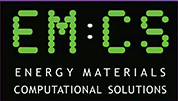Research Themes
1. Lithium Battery Materials: Oxide Electrodes
Rechargeable lithium batteries represent a major leap forward in energy storage with tremendous worldwide success in portable electronics (e.g., mobile phones, laptops). However, future development of improved lithium batteries for hybrid electric vehicles will rely on the need to design novel intercalation compounds.
Exciting new candidates as cathode systems that are being investigated include the layered-structured LiMO2, olivine-type LiMPO4 (where M = Mn, Fe) and Li2FeSiO4 bulk and nanostructured materials. This extends our recent work on the LiMn2O4 spinel and mixed layered system Li(Ni,Mn)O2. Our work on lithium battery materials forms part of the EPSRC SUPERGEN Energy Storage Consortium.
- Article on lithium ion battery research from May 2007 issue of Chemistry World (767 kB)

|

|
| Layered structure of the LiNi0.5Mn0.5O2 battery material showing Ni/Mn and Li layers. | Olivine-structured LiFePO4 showing FeO6 octahedra (orange) and PO4 tetrahedra (yellow). |
Selected references
2. Fuel Cell Materials: Oxide-Ion Conductors
The search for novel compounds with high oxide ion or proton conductivity has attracted considerable attention owing to their important applications in "clean energy" technologies such as solid oxide fuel cells.
- Fuel cell fact sheet (1.7 MB) from our Power to the People exhibit at the Royal Society Summer Science Exhibition 2006.
Our previous work on oxide ion and mixed conductors has included detailed studies of perovskite-structured oxides particularly doped LaMO3 (where M = Ga, Mn, Co). Exciting new families of ion conducting structures that are being investigated include apatite-type silicate phases (based on La10-xSi6O26+y) and Bi-Re fluorite-type oxides.

Silicate-based apatite structure. |

|
|
Silicate-based apatite with SiO4 tetrahedra (yellow); the calculated pathway for oxygen diffusion is shown. |
Selected references
3. Fuel Cell Materials: Proton Conductors
Fascinating recent developments in this field have included the discovery of appreciable proton conductivity in perovskite oxides based upon doped BaMO3 and novel oxides with tetrahedral units such as LaBaGaO4. New innovative work on these complex oxides will encompass the use of quantum mechanical (DFT-based) techniques to unravel the mechanism and energetics of proton transport.
 |
| Crystal structure of LaBaGaO4. |
4. Solar Cells: Inorganic Materials
The general theme here is to apply advanced computational techniques to assist in the characterisation and development of new sustainable materials for thin-film inorganic photovoltaics (PVs). Such materials include the new indium-free phase Cu2ZnSnS4 (known as CZTS), which moves away from the copper indium diselenide (CIS) system. This work is part of the Supergen consortium on "Photovoltaic Materials for the 21st Century". Recent studies include lithium insertion, surface structures and crystal morphologies of the anatase (TiO2) solar cell material.
 |

|
| Anatase TiO2 solar cell material; (a) calculated crystal morphology; (b) anatase unit cell. | |
Our work is investigating the surface structures, defects and crystal morphologies of nanoparticles, which are still not fully characterised. This extends our previous joint work with the University of Trieste on the bulk and surfaces of the CeO2-ZrO2 mixed oxide, which attracted much attention for use in automotive catalytic converters.
Selected references- Olson C L, Nelson J and Islam M S, ‘Defect Chemistry, Surface Structures, and Lithium Insertion in Anatase TiO2’, J. Phys. Chem. B 110, 9995-10001 (2006)


